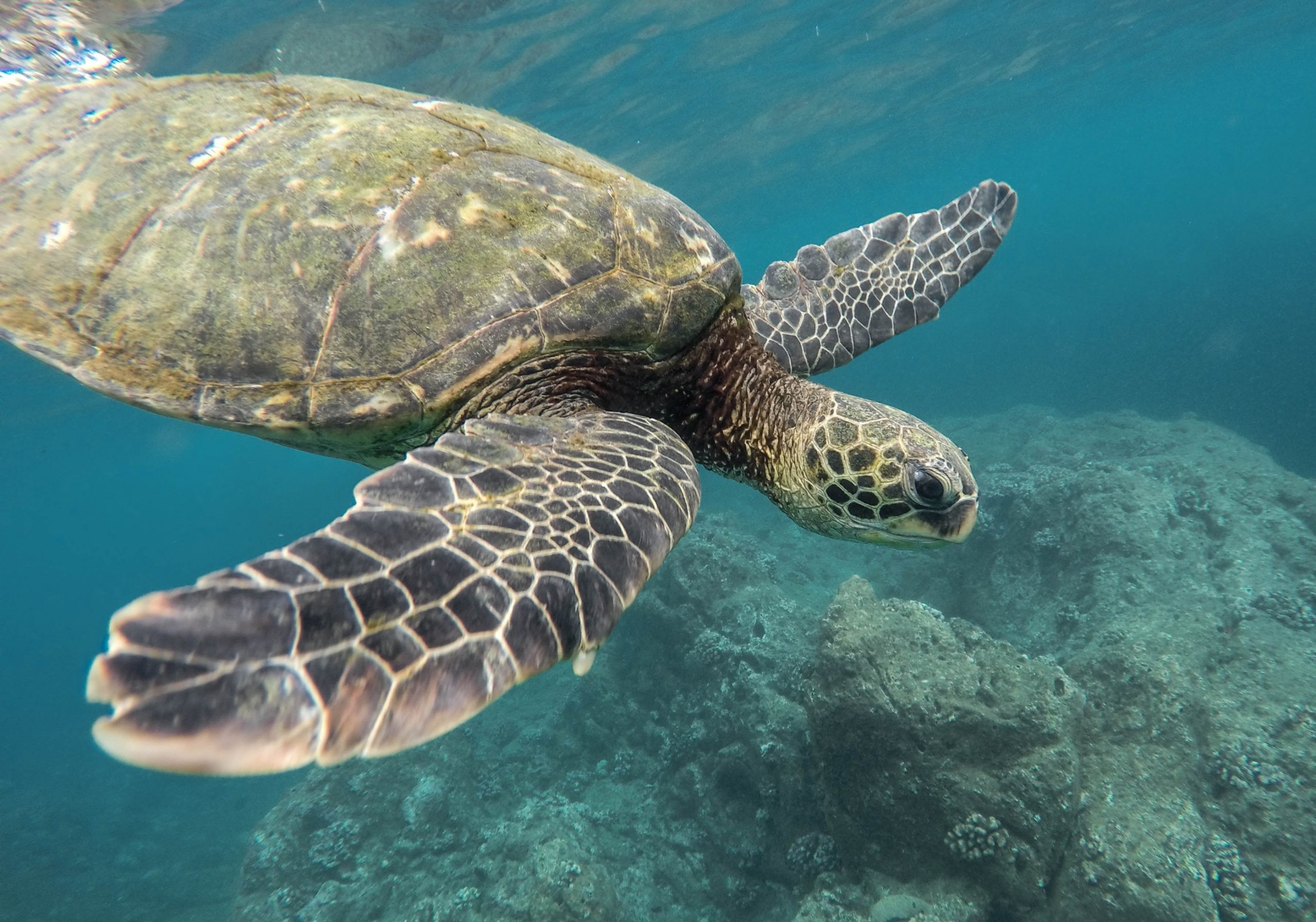Gliding seamlessly through the water, honu, or Hawaiian green sea turtles are a magical sight and one of my favorite sea creatures to spot under Oʻahu’s azure waters. Honu are native to Hawaiʻi, and are the largest hard-shelled sea turtles in the world. They can weigh more than 300 pounds and reach lengths of more than four feet. These reptiles stick to a no-meat diet. Good thing, too, because honu don’t have teeth! Instead, honu use their finely serrated jaws to eat plants like algae, seaweed and sea grass.
Honu remain an important part of Hawaiian culture. Some Hawaiians believe that honu are their ʻaumakua, or individual or family deified ancestor. ʻAumākua sometimes assume the shape of animals, including the sea turtle. Honu were also thought to belong to aliʻi, or chiefs and raised in fishponds. Bones, shells and oil from these turtles were used to make fish hooks, bowls, jewelry, medicine and more.
Today, it’s common to spot these graceful creatures when you’re snorkeling or scuba diving, but you can also catch sight of their shell, ranging in color from streaky yellow and brown to black, and their spotted heads as they pop up to the water’s surface for a breath, or scoot onto the sand to sunbathe. Remember: honu are an endangered and protected species, so be sure to look, but not touch!
So, where can you see honu? Beaches on Oʻahu’s North Shore are popular places for sea turtles. This includes the renowned Laniakea Beach, more commonly known as Turtle Beach, and 15 minutes up the road from Haleʻiwa Aliʻi Beach Park. You’ll often see turtles resting along this small beach. For this reason, it’s become a popular, and sometimes crowded, area with visitors. But the honu have back up. Throughout the day, volunteers with the nonprofit, Mālama na Honu—which means Protect the Turtles in Hawaiian—are also on the beach to ensure the reptiles remain safe while on the sand. The nonprofit also helps identify and track the turtles and can provide information to those who want to share their passion for the honu.
Green sea turtles also frequent one of my favorite neighborhood swim spots, Kailua Beach Park. Located on Oʻahu’s windward or East coast, the large, tranquil beach park is a favorite for both kamaʻāina, or residents as well as visitors. I like to jump in the water here, swimming in the calm waters of Kailua Bay. Sometimes, I’ll spot a honu in the near distance. It’s a special experience!

While many adult honu wade about the shores of the Hawaiian Islands, most female Hawaiian green sea turtles nest at the French Frigate Shoals in the Northwestern Hawaiian Islands. They migrate to the remote atoll every two to five years. It’s a distance of roughly 600 miles! Upon reaching the uninhabited island, they strenuously pull themselves as far up the beach as possible to dig their nests in the sand and lay their eggs. For the first time in recorded history, in summer 2020, Hawaiian green turtles began nesting at Bellows Beach in Waimānalo, located about 20 minutes from Kailua Beach Park. (Officials think this is because of the temporary beach closures during the COVID-19 pandemic.) About two months later, hatchlings are born.

 Facebook
Facebook
 X
X
 Pinterest
Pinterest
 Copy Link
Copy Link


